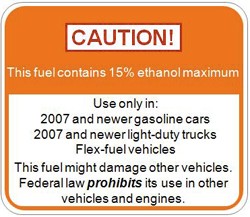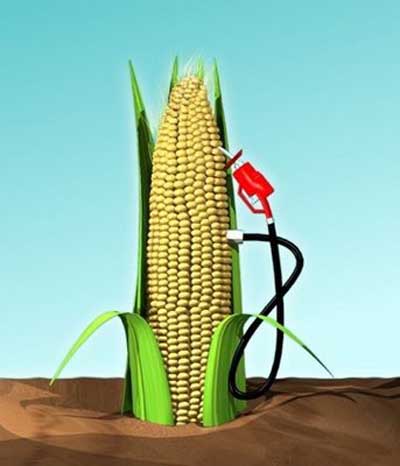Over the past couple of years, there has been a heated debate involving the potential EPA implementation of allowing a greater percentage of ethanol in gasoline. The current volume percentage of ethanol allowed is 10% for vehicles made between the years 2001 and 2006. Recently, the EPA has been discussing the approval of what is known as E15 (15 volume percent ethanol blended with gasoline), and in October of 2010, the request was waived for the implementation of E15 to be allowed in vehicles made in 2007 and later. Taking these two decisions into consideration, this now allows for E15 use in vehicle makes 2001 and newer, lighter-make vehicles into the commerce division. Studies have shown that E15 is likely to result in somewhat lower evaporative emissions compared to fuel currently sold in much of the country (E10) as a result of the lower volatility of E15 under the partial waiver conditions. There are currently two conditions that must be met. These conditions take into consideration the concerns of the community. One condition of the waiver involves the mitigation of the possibility of citizens misfueling E15 in the wrong vehicles. The other condition addresses the fuel and quality of the ethanol.
On January 21, 2011, the EPA did in fact grant a partial waiver for E15 for use in MY2001-2006 light-duty motor vehicles. These decisions were based on test results provided by the U.S. Department of Energy (DOE) and other information regarding the potential effect of E15 on vehicle emissions. Taken together, the two actions allow, but do not require, E15 to be introduced into commerce for use in MY2001 and newer light-duty motor vehicles if conditions for mitigating misfueling and ensuring fuel quality are met. The EPA is still in the process of completing work on regulations that would provide a more practical means of meeting the conditions.
These new waivers implemented earlier this year by the EPA have cattle ranchers in an uproar as well. But what could the Texas livestock industry possibly have to do with the newest ethanol implementations? According to the Texas and Southwestern Cattle Raisers Association (TSCRA), the new 50% increase in ethanol-gasoline allowance, is detrimental to the costs of their livestock production. The TSCRA claim that such a dramatic increase in ethanol permittance will have serious negative repercussions for their cattle ranches. A statement made by TSCRA president and fellow rancher, Dave Scott, indicated that these high levels of corn based ethanol are one of the most influential factors in driving price increases in corn products, including the feed for cattle. This is a clear indication of the dangers we create once we begin to place our food and fuel in competition against one another. In 2008, according to the US Department of Agriculture, feed for livestock reached its record high at $45.2 billion. This was an increase of more than $7 billion from 2007. With the cost of feed for livestock and newer, higher levels of ethanol being so intertwined with each other, we will only be seeing an even more dramatic rise in the cost of feed for cattle production…and more unhappy ranchers.
Our nation’s food supply and methods of transportation must find a way to compromise and divert their routes of competition elsewhere because both are at serious risk in the future.




